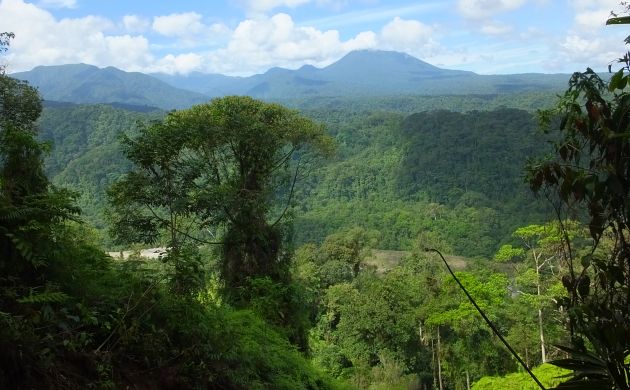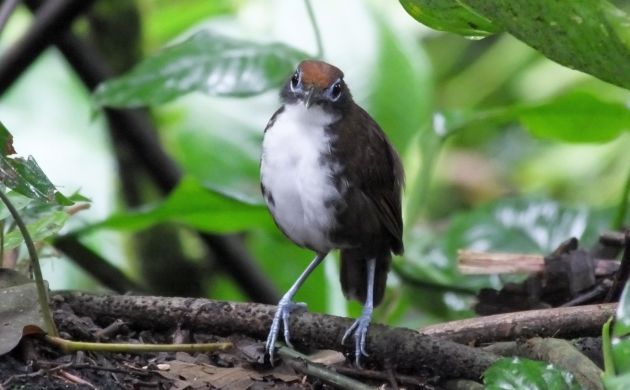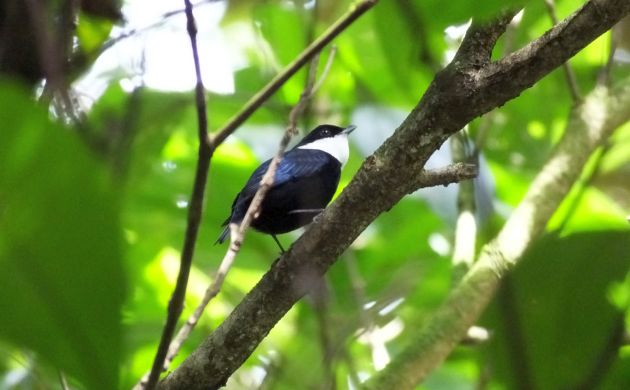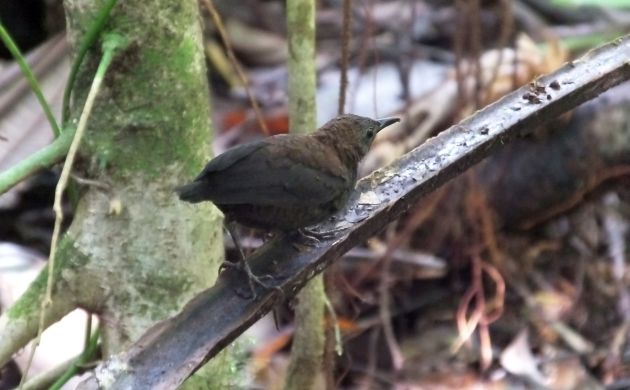
Tropical forests are the bastions of avian biodiversity. If you thought that migrant traps and spring in south Texas were birdalicious (and they can indeeed be spectacular), how does an ecosystem with 400 and even 500 plus species tickle your birding fancy? Lowland rainforest ecosystems in Amazonia typically host well over 500 species and the richest rainforests in Costa Rica have lists with 300 to 400. Yep, that’s a heck of a lot of birds and in Costa Rica, that many in a small area are only going to be found in places with sizeable tracts of primary rainforest.
Braulio Carrillo National Park is a sizeable tract of forest.
This brings us to the first obvious upside of rainforest birding in Costa Rica; a chance at a lot more species than other habitats. Put those binoculars into practice in places like Laguna del Lagarto, the Sarapiqui area, and the Osa Peninsula, and a day of birding might include three trogon species, two to three toucan species, several wrens, manakins, parrots, five or more woodcreeper species, etc., and the list goes on…
You might see a White-ruffed Manakin.
Another upside to birding in rainforest is a chance at seeing rare and shy bird species like wood-quail, quail-doves, Long-tailed Woodcreeper (a different, cryptic species than the Amazonian one), an antpitta or two, certain antbirds, White-fronted Nunbird, and other birds of the deep forest. Since these species rarely or never come to the edge of the woods, you need to venture into the deep, dark forest to find them. But even if you do spend a day stalking through the half-light of the primary forest, you would have to win the avian lottery to see all of your targets. This is because ground-cuckoos, leaftossers, and other strange-sounding tropical species are rare by nature.
The Nightingale Wren refuses to come to the edge of the forest, and hates to be seen inside the forest. Talk about unfriendly!
There aren’t many stake-outs for such birds and those feathered ninjas are experts at avoiding detection. Instead of wandering around the forest floor in flocks or large numbers, most rainforest birds occur at very low densities, use microhabitats, and have scattered territories. This all adds up to some unreliable birding indeed and many a moment when you wonder where the heck the birds are, especially when you start wishing that the heavy drone of the mid-day cicadas was actually a bird and not some equally hidden insect. It’s also common to start wondering why birds aren’t eating those noisy cicadas. Hopefully at that point, a mixed flock will pass through the forest, kill a few cicadas, and give you a dozen lifers in one fell swoop. Or, you or your guide puts the scope on a fruiting tree to watch the quiet arrival and departure of one species after another including manakins, trogons, pigeons (ahem, not Rock), and a much hoped for cotinga. Or, another much desired option is hearing the soft calls and songs of antbirds that reveal the presence of an antswarm and real opportunities at seeing antpittas, tinamous, forest-falcons, and even senor maximus of the understory (the Rufous-vented Ground-Cuckoo) in action.
“Welcome to my antswarm party!” sayeth the Bicolored Antbird.
Those and other bird-a-thrill, uncommon events are also why we trade the easy bird activity at the edge for hours inside the forest. While you can see a lot of birds in second growth and other edge habitats, you won’t see most of the coolest looking forest species away from the shade of massive, old growth trees. As for myself, although there are times when the forest might seem birdless, it’s always better to hang out with giant trees than watch Tropical Kingbirds in a hot, chigger infested cattle pasture.













Wow, amazing birds! Your post is perfect for an armchair traveler on this cold, winter day.